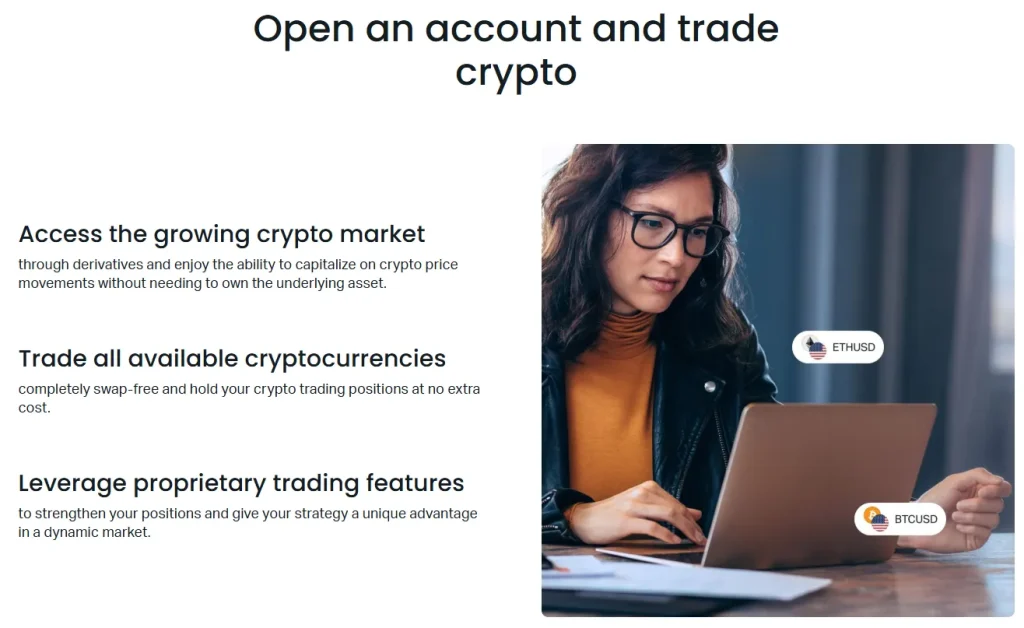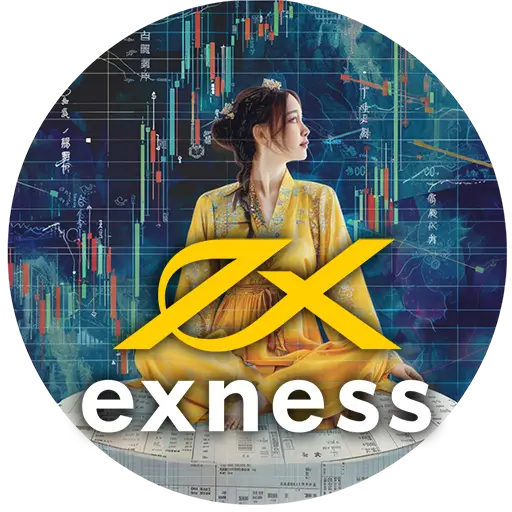Crypto Trading with Exness
Home » Crypto trading

Digital Asset Trading Framework
Exness provides cryptocurrency trading through CFD instruments, enabling price speculation without actual cryptocurrency ownership. The platform supports major cryptocurrencies including Bitcoin, Ethereum, Litecoin, and Ripple with 24/7 market access. Price formation reflects aggregated data from multiple exchanges, creating more stable quotations.

Crypto Account Structure
Cryptocurrency trading is available across different account types. Standard accounts offer trading with floating spreads while Professional accounts provide tighter spreads with a commission-based structure. Account currency selection affects profit and loss calculations when trading crypto instruments.
Cryptocurrency Instrument Specifications
Bitcoin (BTC/USD) serves as the primary cryptocurrency instrument with 1 BTC contract size and $1 minimum price movement. Ethereum (ETH/USD), Ripple (XRP/USD), and Litecoin (LTC/USD) provide alternative cryptocurrency exposure with their respective parameters. Each instrument maintains specific margin requirements that adjust based on market volatility.
Leverage Considerations
Cryptocurrency CFDs support variable leverage typically ranging from 1:2 to 1:20, lower than forex instruments due to heightened volatility. A 1:10 leverage ratio means each 1% price movement generates a 10% change in invested capital. Margin requirements fluctuate based on market conditions and position size.
Spread Structure and Trading Costs
Cryptocurrency trading costs appear primarily through bid-ask spreads, which typically exceed those of major forex pairs due to liquidity differences. Spreads widen during market volatility, significant news events, or off-peak hours. Additional costs include overnight financing fees for positions held beyond the daily cutoff.
Order Execution Process
Orders follow the same execution protocol as other instruments. Market orders execute at the next available price while limit orders execute only at specified levels. The system processes most orders within milliseconds under normal conditions with real-time position monitoring through the platform interface.

Risk Management Tools
The platform provides essential risk control tools:
Stop Loss orders automatically close positions at specified levels, limiting potential losses during adverse price movements.
Take Profit orders secure gains by closing positions when prices reach predefined targets.
Margin calculators allow pre-trade assessment of capital requirements to prevent inadequate funding scenarios.
Cryptocurrency Analysis Features
Technical analysis tools apply directly to cryptocurrency charts with indicators such as Moving Averages, RSI, and Bollinger Bands. Multiple timeframe analysis allows examination from 1-minute to monthly perspectives. News integration provides market-relevant information directly within the platform.
Mobile Crypto Trading Functionality
The mobile application supports full cryptocurrency trading capabilities identical to desktop platforms. Chart analysis tools maintain consistency across versions, and notifications alert users to significant price movements, margin calls, or executed orders even when the application runs in background.Crypto Trading Comparison
| Feature | Exness Crypto CFDs | Direct Exchange Trading | Crypto Futures |
| Ownership | No actual crypto | Direct ownership | No actual crypto |
| Leverage | Available | Limited/None | Available |
| Trading Hours | 24/7 with minor breaks | 24/7 | 24/7 or session-based |
| Security Responsibility | Platform handled | User responsible | Platform handled |
| Fees Structure | Spread + potential swap | Maker/taker fees | Spread + funding rate |
FAQ: Preguntas Frecuentes
How does cryptocurrency CFD trading differ from exchange trading?
CFD trading tracks cryptocurrency prices without actual asset ownership, eliminating wallet management and private key concerns. Trades execute faster without blockchain confirmation delays and leverage options allow larger position sizes. The downsides include inability to use cryptocurrencies for transactions, potential overnight fees, and platform dependency.
What causes the high volatility in cryptocurrency trading?
Cryptocurrency markets experience greater volatility due to relatively shallow market depth, rapid sentiment shifts from news and regulatory announcements, varying institutional participation, and technical infrastructure developments. Risk management requires wider stop-loss settings and smaller position sizes than traditional markets.
How should I approach cryptocurrency trading during major market events?
Reduce position sizes before known events like protocol upgrades or regulatory announcements. Consider widening stop-loss parameters to prevent premature triggering during volatility spikes. The platform offers event calendars highlighting potentially market-moving occurrences. Average volatility typically increases 2-3 times during significant market developments.

